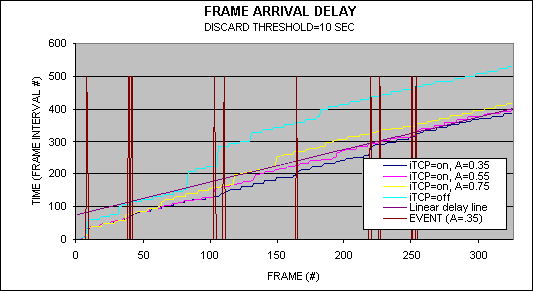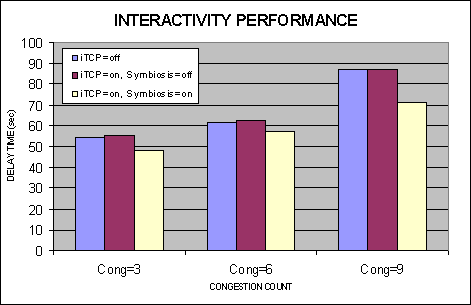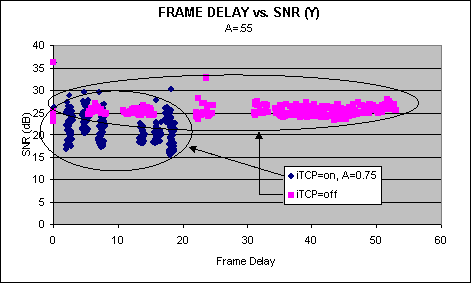Sample Performance Results



Sample Performance Results |
|
| Here we show sample results of our controlled experiment and breif performance analysis. Check our published work for all experiments and performance details. | |
 |
|
| Fig-1. This figure plots the arrival time of video frames. It shows the ideal case (linear delay line) with three cases of event-aware (iTCP=on) video sessions and one event-unaware session (iTCP=off). Each (iTCP=on) case used a different bit-rate reduction ratio "A" when reacting to reported loss events. In the event-unaware case, the backlog increased with each loss event (observed as the step jumps in delay), but iTCP helped in eliminating these step increases and the general pattern followed the ideal case. | |
 |
|
| Fig-2. This figure highlights the overhead of the interactivity service. In the (iTCP=on Symbiosis=off) case we turn on the interactivity service but no rate reduction is performed. The (iTCP=off) represents the classic-TCP case (no interactivity and no rate reduction). Comparing these two cases only we see a small overhead associated with iTCP event trapping mechanism. However, this small overhead is vastly outweighed by the third case (iTCP=on, Symbiosis=on) where both services are activated. The graph compares three levels of network congestion. | |
 |
|
| Fig-3. Here we show the tradeoff between video quality and frame delivery time as an effect of interactivity service of iTCP. In the blue cluster (iTCP=on) we see a temporal reduction of the SNR quality as a result of the bit-rate symbiosis when compared the pink cluster (iTCP=off). However, iTCP dramatically reduced frame delivery delay by controlled trade-off of the SNR quality. |